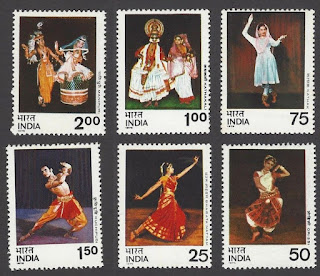Raja Ravi Varma, born on 29 April 1848,
at Kilimanoor Palace, near Trivandrum,
Travancore princely state, British India [now Thiruvananthapuram, Kerala,
India), was an Indian painter best known for uniting Hindu mythological subject
matter with European realist historicist painting style. He was one
of the first Indian artists to use oil paints and to master the art of
lithographic reproduction of his work. In addition to incidents in Hindu
mythology, Varma painted many portraits of both Indians and British in India.
Varma was born into an
aristocratic family in Travancore state. He showed an interest in drawing from
an early age, and his uncle Raja Raja Varma, noticing his passion for drawing
on the palace walls, gave him his first rudimentary lessons in
painting. When Varma was 14, Maharaja Ayilyam Thirunal, ruler of Travancore at
the time, became a patron of his artistic career. Soon the royal painter Rama Swamy
Naidu started teaching him to paint with watercolours. Three years later Varma
began to study oil painting with Theodore Jensen, a Danish-born British
artist.
Varma was the first Indian to
use Western techniques of perspective and composition and to adapt them to
Indian subjects, styles, and themes. He won the Governor’s Gold Medal in 1873
for the painting Nair Lady Adorning Her Hair.
He became a much-sought-after artist among both the Indian nobility and the
Europeans in India, who commissioned him to paint their portraits.
Though his portraits brought him fame, Varma increasingly
painted subjects in Indian mythology. His representations of Hindu gods and
goddesses and characters in the epics and the Puranas reflected his absorption
in Indian culture. His paintings, including Harischandra
in Distress, Jatayu Vadha,
and Shri Rama Vanquishing the Sea, captured dramatic
moments from Indian mythology. His depictions of Indian women drew such
appreciation that a beautiful woman would often be described as looking “as if
she had stepped out of a Varma canvas.”
Varma adapted Western realism to pioneer a new movement in Indian art. In 1894 he
set up a lithographic press in order to mass-produce copies of his paintings as
oleographs, enabling ordinary people to afford them. That innovation resulted
in the tremendous popularity of his images, which became an integral part
of popular Indian culture thereafter.
Varma was criticized severely by later artists who saw the
content of his work as only superficially Indian because, despite depicting
mythological Indian themes, it imitated Western styles of painting. That view
was instrumental in the formation of the Bengal School of Art (or Bengal school), whose members
explored ancient Indian artistic traditions with a modernist sensibility.
Despite the dismissal of Varma’s work by some as “calendar
art,” interest in his work has remained constant. In 1997, for example, The
Begum’s Bath sold for a record price for an Indian
artist. Works such as The
Maharashtrian Lady, Shakuntala, The
Milkmaid, Expectation, and Pleasing exhibit Varma’s characteristic sense of
beauty and grace.






